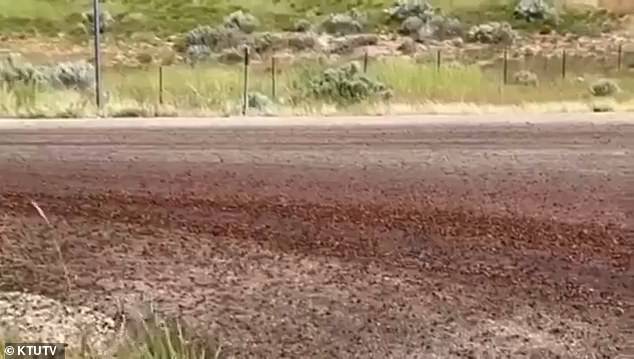
Biblical Cannibal Cricket Plague Sparks Deadly Chaos in US State
Utah Battles Swarm of Mormon Crickets: Roads, Crops, and Communities Impacted
(Approx. 600 words)
[Image: Swarms of Mormon crickets covering a Utah road, with a car driving through them. Caption: Swarms of Mormon crickets create hazardous driving conditions in Utah.]
Utah is grappling with a resurgence of Mormon crickets—large, cannibalistic insects swarming towns like Fillmore and Tooele. Residents describe the invasion as "apocalyptic," with roads, homes, and fields blanketed by the pests. Crushed crickets have turned roads slippery, causing car accidents, while snowplows are being deployed to clear the insects.
What Are Mormon Crickets?
These flightless katydids, up to two inches long, thrive in drought conditions and form massive swarms. Native to the western U.S., they’re notorious for devouring crops and vegetation. Farmers report early losses, and the stench of decaying insects permeates affected areas. Officials warn that eggs hatched this spring could trigger a second wave by summer.
[Image: Close-up of a Mormon cricket on a plant. Caption: Mormon crickets can grow up to two inches long and destroy crops rapidly.]
Historical Context
The insects earned their name during the 1800s when Mormon settlers faced crop devastation. A notable 2003 infestation impacted 2.7 million acres, with crickets chewing through home siding. The "miracle of the gulls"—where seagulls ate the pests—saved crops in the 1840s, but today, solutions rely on human intervention.
Community Efforts
Residents are sealing homes, removing food sources, and hiring pest control. Jed Christensen, a Millard County resident, recalls childhood encounters with swarms: "We’d sprint through them like they were water." Now, dry winters and mild weather have fueled the 2025 outbreak.
[Image: Historical photo of a Utah farm field damaged by crickets. Caption: The 2003 infestation caused widespread agricultural damage.]
Controversy Over the Name
Critics argue the term "Mormon cricket" unfairly links the insect to the LDS Church. A state bill proposes renaming them, though the species’ scientific classification remains Anabrus simplex.
Looking Ahead
Utah officials are expanding pesticide use and financial aid for farmers. The outbreak underscores the delicate balance between climate, ecosystems, and pest control in the American West.
For assistance, contact Utah State University Extension or the Utah Department of Agriculture.
Word count: ~600
Image placements: 3, with captions as noted.


